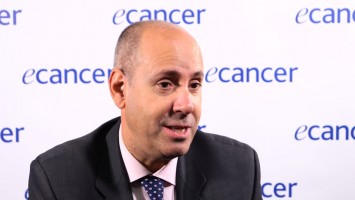The new data we’re presenting on MONALEESA-3, the data for progression free survival has already been presented and that’s what got the drug approved, but the question was would there be an impact on overall survival. It’s gratifying to report that there is a significant improvement in overall survival in patients who are receiving the combination of ribociclib plus fulvestrant compared to fulvestrant and placebo. So we are now showing that if we are using one of our best available hormonal therapies alone versus that combination we’re seeing a 28% improvement in survival that may get even better because we have not yet reached the median overall survival for the ribociclib arm whereas we have reached the median for the control arm.
The other exciting thing about the study is that there are 726 patients that were treated on the study and half of them were treated in the first line setting. That is an important new finding as well because almost all of the other CDK4/6 inhibitors, including ribociclib, have been tested in the second line setting after patients have failed another hormonal therapy in their treatment. There has been a debate as to whether or not you should hold these drugs until you get in the second line and use them then. The MONALEESA-3 data now can put that debate to rest in the sense that with about 50% of the population treated in the first line again there is a significant difference whereas we haven’t reached the median yet in the experimental arm but the control arm has now reached its median. So this could only get better.
MONALEESA-3 has shown with longer follow-up no new safety signals. It’s all of the safety signals we’ve seen and reported on before with the progression free data. Neutropenia is the major safety signal; there is some transaminitis that has been seen before; the QTc prolongation with no significant cardiovascular or cardiac rhythm problems that were seen. With the new advisories about looking for interstitial lung disease and pneumonitis and specifically focussing on that, there is no grade 3/4 that have been seen in the study. So I think we see nothing that is giving us cause to be concerned.
The take-home message from MONALEESA-3 is this can be practice changing now for the first line setting. It is now okay to use this drug and, in fact, preferable to use this drug in the first line setting because of this significant survival advantage. It’s not only statistically significant but it’s clinically meaningful in terms of the magnitude.








